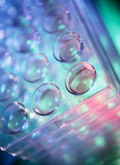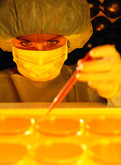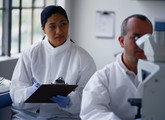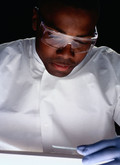Biosimilars
Fujifilm and Kyowa Hakko Kirin in biosimilars joint venture
Japanese Fujifilm Corporation announced on 16 November 2011 that it is once again making an agreement in the biosimilars field, this time with biotech firm Kyowa Hakko Kirin, Tokyo, Japan.
Economic evaluation of biosimilars
Biological drugs represent a fast-growing segment of the pharmaceutical market. They make up 32% of drugs in the development pipeline and 7.5% of marketed medicines and account for around 10% of pharmaceutical expenditure [1].
Acino grabs Cephalon’s Middle East and African business
Switzerland-based generics company Acino Pharma announced on 14 October 2011 that it had agreed to buy biopharmaceutical company Cephalon ’s combined Middle East and African business in a transaction worth approximately Euros 80 million.
New Amgen Enbrel patent could block biosimilars until 2028
Amgen announced on 22 November 2011 that it had been granted a new US patent on its blockbuster drug Enbrel (etanercept).
Speed to market critical in biosimilar development
For companies looking to develop biosimilars speed to market is critical, but this must not be done by sacrificing product quality, according to a report from Contract Research Organisation (CRO) Quintiles. The most successful biosimilar companies will be those who collapse their clinical, commercial, and regulatory thinking into a streamlined cohesive function in order to expedite commercialisation and optimise market access.
FDA definitions of generics and biosimilars
Confusion surrounding terms used in the global field of generics and biosimilars is a recognised problem.
The source of some of this confusion is due to authorities in various regions of the world defining terms differently and other instances are due to a misunderstanding of the actual nature, characteristics, and method of research and manufacture of these biological products.
US biosimilars: many barriers to overcome
EMA has been successful in devising a system for authorising the marketing of biosimilar products and 14 biosimilars are currently on the market in the major countries of the EU [1]. Generally, biosimilars are priced about 30% less than the originator product. This seems to be sufficient to gain significant (~ 30%) market share in a year or two though it keeps biosimilars very expensive. This is in dramatic contrast to the situation in America. In 2010 the ‘biosimilars statute’ (BLA) eventually came into force as the result of the Patient Protection and Affordable Care Act. The proposed rule involves two particularly onerous requirements that the EU process avoids.
The first is the question of degree of similarity.
Natco snaps up biosimilars: signing deal with Mabxience
Indian generic drugmaker Natco Pharma announced that it had entered into an exclusive agreement with Mabxience, the biosimilar division of Swiss firm Chemo Sa Lugano, on 19 September 2011.
The controversies surrounding biosimilars
It is well known that the introduction of similar biological medicinal products, or biosimilars, has caused not a little controversy in the medical world. The aim of healthcare providers/payers, either healthcare authorities or insurance companies, is to reduce the healthcare budget has risen in recent years through the introduction of expensive companion diagnostics, devices, and drugs. At the present moment this can only be achieved in two general ways: either the availability of therapies must be restricted from the patients who would benefit from them, or otherwise the costs of the procedures and drugs must be reduced to within affordable limits so that the majority of patients can benefit from them.
Battle rages over anti-thrombotic medicine
Sandoz/Momenta are ahead again in the fight for the lucrative anticoagulants market in the US. According to IMS Health data enoxaparin sodium injection is the best-selling hospital medicine in the US, and has been described as the ‘gold standard’ for anti-thrombotic treatments. Lovenox, sanofi-aventis’ reference product, recorded US sales of US$2.7 billion in 2009 and has been used to treat an estimated 200 million patients worldwide since it was launched.













